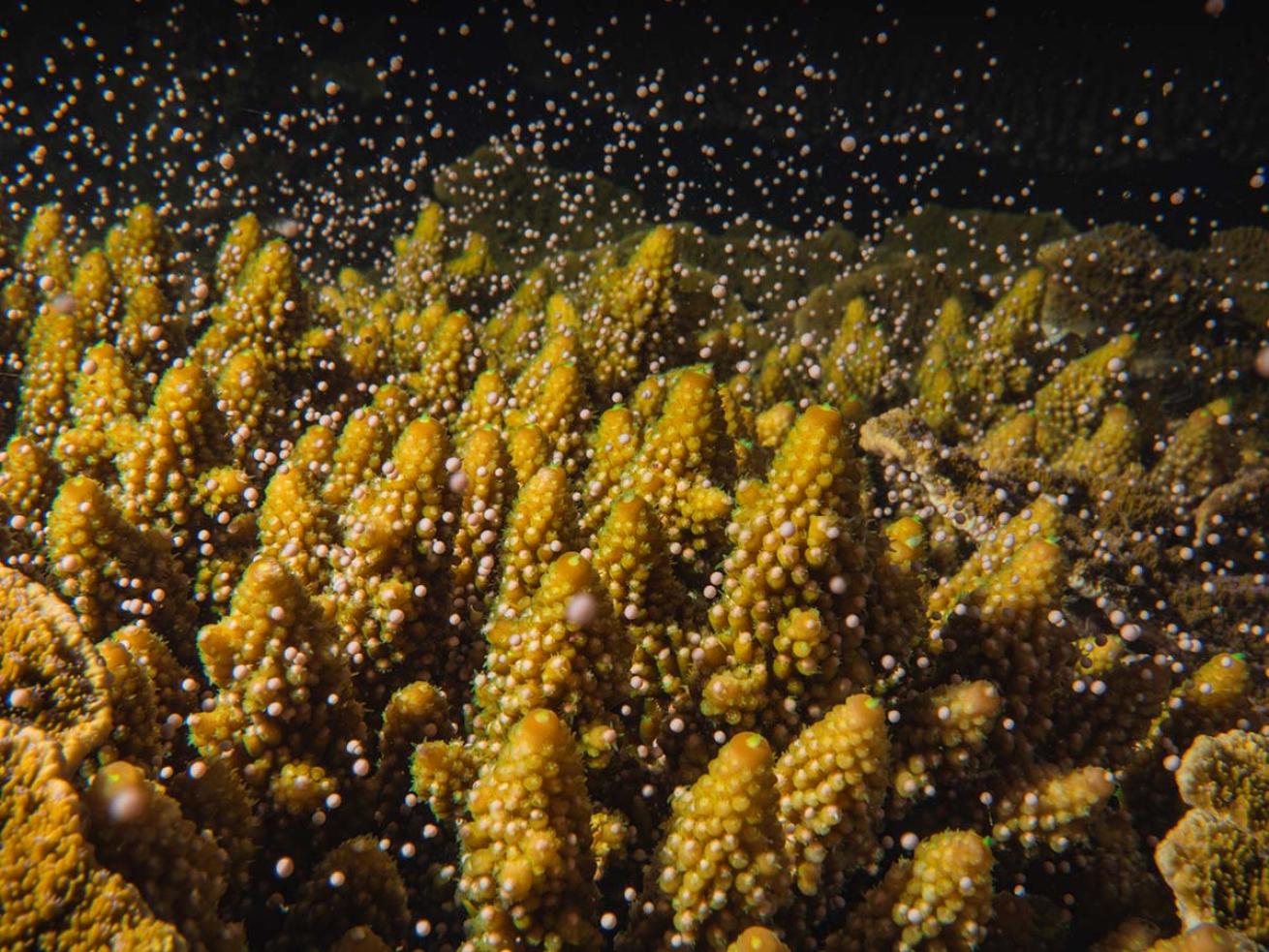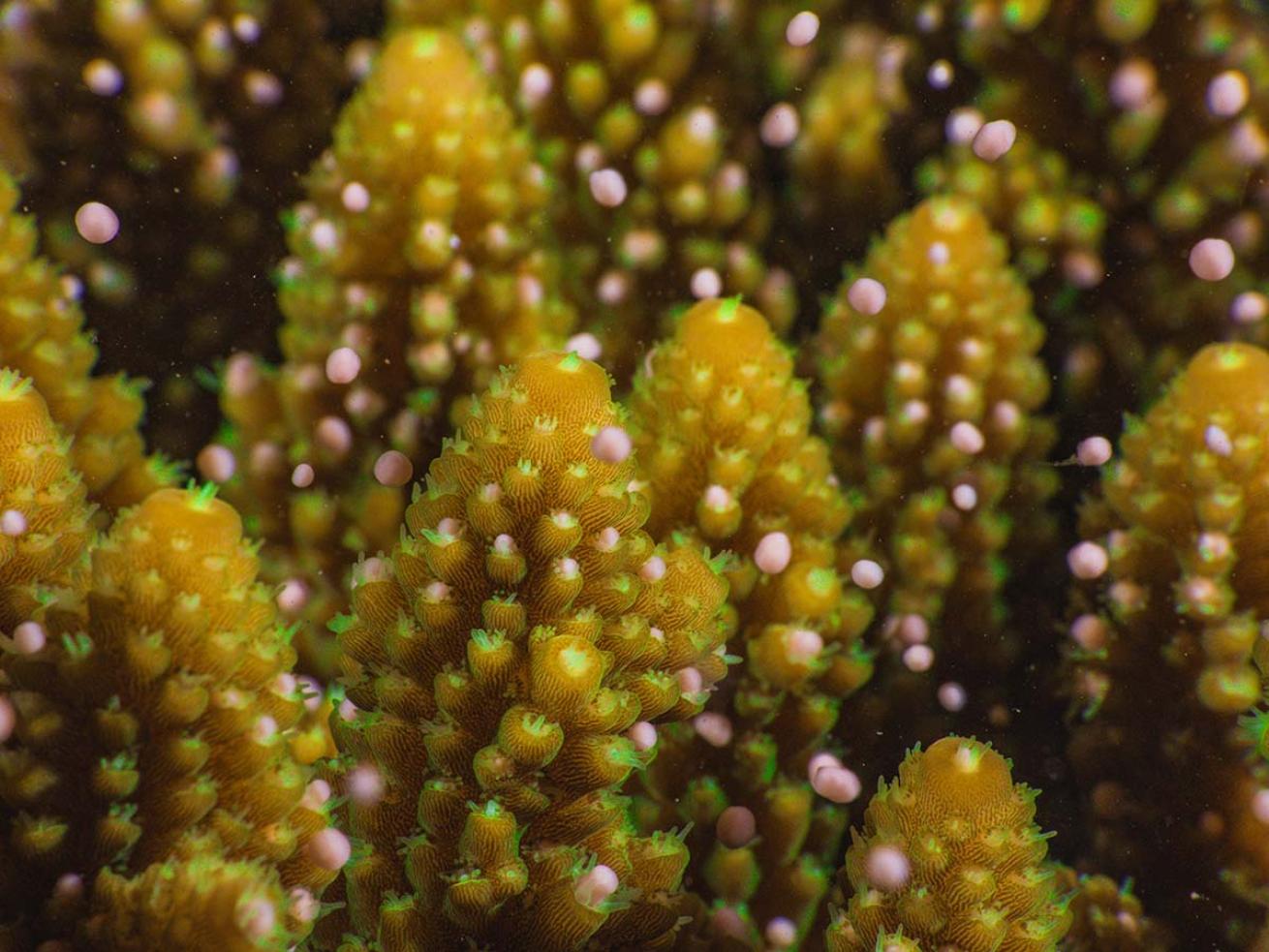‘Magical’ Coral Spawning Witnessed on Great Barrier Reef

Shutterstock.com/Coral BrunnerAcropora corals spawn in Queensland, Australia.
Scientists recently recorded videos of corals spawning en masse at night in the Great Barrier Reef off the coast of Cairns, Queensland.
"Nothing makes people happier than new life, and coral spawning is the world's biggest proof of that," Reef Teach principal marine scientist Gareth Phillips tells EcoWatch. He has observed coral spawning events for the past 10 years, but this spawning was unique, he says.
"I've seen the corals all go off at once, but this time there seemed to be different species spawning in waves, one after the other. The conditions were magical with the water like glass and beautiful light coming from the moon," Phillips says.
Corals on the Great Barrier Reef reproduce asexually throughout the year, but they only reproduce sexually once a year, after the full moon in November. The spawning typically happens at night when there are few predators. During the mass spawning event, different corals synchronize the release of tiny sacs that contain their sperm and eggs. These sacs float to the surface of the ocean, where the sperm and eggs bump into each other, fertilizing. Then, the fertilized eggs develop into baby coral larvae that floats through the ocean, eventually settling on an existing reef structure or sand patch to form a new coral colony.
Phillips observed two main groups of corals that spawning: first branching corals, which released pinky-mauve sacs, followed by boulder corals releasing gametes that resembled a plume from a flooding river.

Shutterstock.com/Coral BrunnerAcropora is a broadcast spawner, releasing sacs containing eggs and sperm into the ocean.
The event resulted in billions of new coral larvae, a great sign of hope for the Great Barrier Reef, which has been battered by bleaching in recent years.
"It made me so excited about the future — there is just so much potential for this reef," marine science student Nicole Rowberry tells EcoWatch.
The reef system comprises more than 3,000 individual reefs. It covers an area about the size of Italy. But since 1995, it has lost over half of its coral covering, and a recent study shows that the five mass coral bleaching events that have happened since 1998 have left only 2 percent of the reef unscathed.
Coral bleaching events happen when water temperatures get too high. Ocean warming, which is an effect of climate change, causes underwater heat waves that prompt corals to expel their internal food source. If the water surrounding the corals does not cool in a short amount of time, the corals will starve and die.
The worst coral die-offs due to bleaching happened back-to-back in 2016 and 2017, and another round of heat waves afflicted the Great Barrier Reef in 2020.
"It is gratifying to see the reef give birth. It's a strong demonstration that its ecological functions are intact and working after being in a recovery phase for more than 18 months," Phillips says. "The reef has gone through its own troubles like we all have, but it can still respond, and that gives us hope. I think we must all focus on the victories as we emerge from the pandemic."










